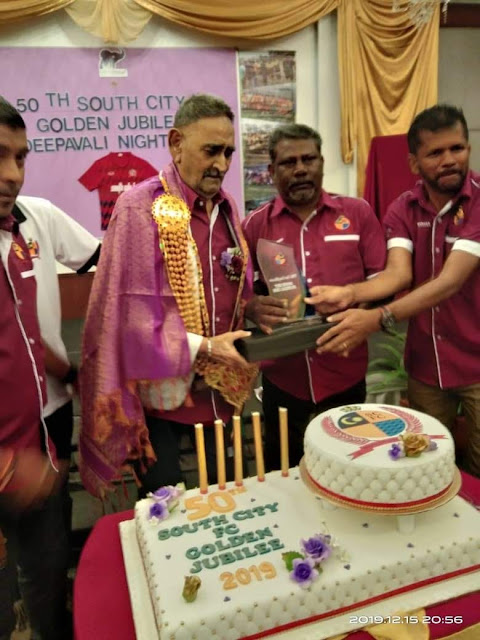ANOTHER NEW YEAR WITH A BROKEN RECORD
By Tony Mariadass
FOR as long as Malaysian sports try to achieve success through short term
programmes, incompetent sports officials making key decisions with personal
agendas as their priority, constant changes to programmes, coaches not having
their say, external interferences, foreign coaches being bounced back and forth
because of indecisiveness and a whole lot of decisions which are questionable, we will
be facing disappointments over and over.
The problem in Malaysian sports is at the top. We need to make drastic
changes where it needs to be done to put things right and wait for success.
Nothing happens over night and no magic wand can give you instant results.
Even long-term programmes planned by some associations are soon forgotten and want overnight results.
There is no short cut to success. Only hardwork, proper planning with the right qualified personnel helming programmes, with no interference, one or two Olympic cycles planning, patience, determination, proper and fair selection with the best players being given the opportunity – which means combing the length and breath of the country with more than 30 million population to look for new, the best and young talent to be given the opportunity - will there be a flicker of hope to see Malaysian sports make a turn around for the better.
It is pointless coming out with beautiful roadmaps, all looking great on paper and impressive launches, but not implemented with same vigour and commitment and more often these plans collecting dust on the shelves in some corner.
Talent scouting by ex-internationals for all sports should be immediately
implemented to search for talent at every nook and corner of Malaysia.
Foreign players to be naturalised is NOT the answer.
Yes. sports these days is borderless. Maybe at worst we can resort to
mixed parentage players, but it should be done with proper scrutiny and done by
technical officials and not team managers and agents, who more often are more
interested in the money they can earn with these dealings.
And national sports bodies alone cannot be held responsible for the ills
of Malaysian sports.
The national bodies can come up with elaborate programmes, but the implementation
of these programmes largely is the responsibility of the affiliates – besides states,
districts, schools and even at the grassroot with the academies playing a huge
role. It is collective effort.
It is pointless collecting data or making selections, but only to
collect dust and not utilised.
Analysis and recommendations must be done by qualified technical
officials and not team managers who hold a string of posts in their national
body, which clearly makes their report a conflict of interest.
In fact, in many cases team managers have been the cause for the failure
of teams but in their reports which is supposed to be transparent, switch the
blame to everything and everybody else, but themselves.
There have been cases where team managers who are hardly qualified in
the game make decision and get involved in line-ups and sometimes even naming
players into the squad, both local, naturalised and mix-parentage.
Some heads of associations who have been dragged through mud for their incompetency
in managing their state or national associations, still hold on to their post
and even stand for elections in political parties.
Sports associations for many has become a platform to promote themselves
and achieve their personal agenda rather than look into the promotion of the
sports and taking it to the next level.
Failure after failure, controversy after controversy and incompetency,
never sees them shun the limelight to continue to hold on to their sports portfolios.
Some even are heads of several sports bodies and more often is seen as a
conflict of interest. But do they care?
And who are we to blame for this sad scenario in their Malaysian sports?
None other than the affiliates who vote them in because of favours, positions
and money promised.
How can Malaysian sports have any proper continuity, vision, or
direction, when we have three Sports Ministers in one term!
Each one comes with their own agenda and the ones to suffer are the sports
associations and athletes.
Some have even quit or prefer to be independent sportsmen or women because
of all these uncertainties at the highest level.
Sports Associations themselves must start to stand on their own feet and
manage their association like a company.
They cannot depend on the Ministry of Sports or National Sports Council
(NSC) to be funding all their programmes and training of their athletes.
As National Sports Association (NSAs) they are responsible for their sports.
Any aid from NSC’s is welcome but that should not be their sole source
of funding for their programmes and activities.
It is pointless in complaining that NSC is holding court when it comes
to the training of their respective sports’ athletes, when the NSA’s themselves
surrender to them.
Malaysian sports need a drastic overhaul immediately for it to have any
hope in the future.
But are the National bodies, NSAs and the affiliates ready to make the
bold move and change?
If not, stop mourning, groaning, and complaining and just accept that
Malaysian sports is doomed.
A Very Happy New Year and sports bodies if you are making a resolution,
make the right one that makes a difference. Otherwise, just sit back and
continue to enjoy the ills of Malaysian sports.
Continue to look for excuses for the poor performances and blame it on
Covid-19, the weather, lack of funding etc., as other nations with lesser means
continue to soar and embarrass us.
The choice is yours. Either we move forward to year 22 or go back to 20!



















